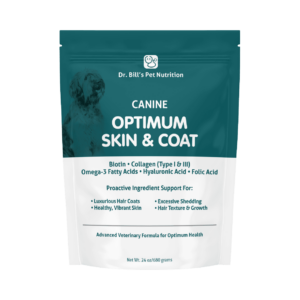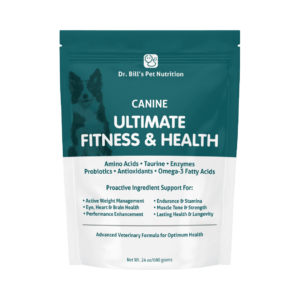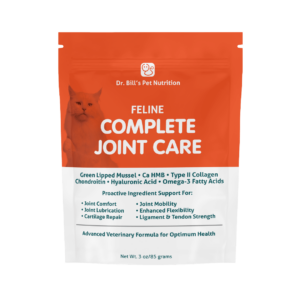
Hyaluronic Acid
Hyaluronic acid is a glycosaminoglycan (GAG), a very long chain of disaccharides (sugars) present in all connective tissues that is responsible for retaining moisture. As animals age, levels of hyaluronic acid can decrease by as much as 50 percent. Magnesium and zinc deficiencies appear to accelerate this loss.
Hyaluronic acid is a substance that attaches to collagen and elastin to form cartilage. HA not only helps keep the cartilage that cushions joints strong and flexible, but also helps increase supplies of joint-lubricating synovial fluid.
Together, synovial fluid and cartilage act as shock absorbers that can withstand a tremendous amount of wear and tear. However, in joints afflicted by arthritis, hyaluronic acid levels become extremely low, causing the synovial fluid to become less viscous and the cartilage less effective.
Hyaluronic acid performs many important functions. It helps deliver nutrients to and carries toxins from the cells that do not have a blood supply (cartilage). Not only does it keep joints lubricated, but hyaluronic acid also encourages water retention in other bodily tissues. It is found in large concentrations in the extracellular matrix (ECM), which is the fluid-filled space between cells. HA locks moisture into the ECM, keeping collagen and elastin moist.
One of the most researched benefits of hyaluronic acid is in osteoarthritis. Its effectiveness in this area is related to its concentration in the knees, hips, and other moving joints. It is a major component of both cartilage and the synovial fluid that bathes these joints, binding to water to create a thick, gelatinous substance that lubricates and protects the joint cartilage.
Hyaluronic Acid is found in all bones and cartilage structures throughout the body. HA is especially found in various forms of cartilage but none more than the hyaline cartilage. Hyaline cartilage covers the ends of the long bones where articulation (bending) occurs and provides a cushioning effect for the bones.
Animal joints (like the elbows and knees) are surrounded by a membrane called the synovial membrane which forms a capsule around the ends of the two articulating bones. This membrane secretes a viscous liquid called the synovial fluid, which provides the elastic shock absorbing properties to the joint. Synovial fluid also carries nutrients to the cartilage and removes waste from the joint capsule.
Connective tissue is found everywhere in the body. Its major functions include binding, support, protection, and insulation of the tissues that make up the animal body. One such example of connective tissue is the cordlike structures that connect muscle to bone (tendons) and bone to bone (ligaments). In all connective tissue there are three structural elements; ground substance (hyaluronic acid), stretchy fibres (collagen and elastin) and a fundamental cell type.
NEW
Subscribe & Save
Save 10% On Auto Deliveries
Shop Now




